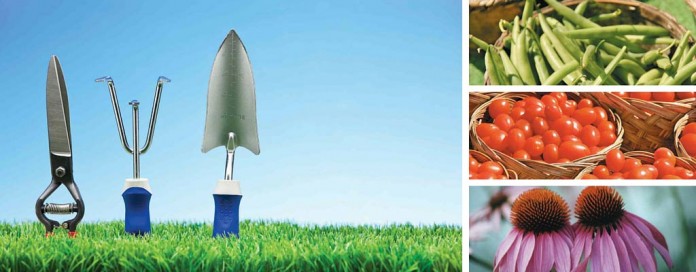As 2015 comes to a close, we reflect on the year and look forward to the new one. In 2016, let gardening become the topic of one of your New Year’s resolutions by checking out these recommendations.
Try new techniques
If you’ve always planted a typical plot garden, switch things up this year by creating a square foot garden or planting in containers. Consider gardening into fall byextending your typical season, too. You’ll be surprised to learn what you like and don’t like, and what works and what doesn’t work for your climate and location.
One idea for winter is to start seeds indoors before transplanting them as seedlings come spring. Indoor growing requires a lot of sunlight and watering, but it’s a great way to practice growing a number of varieties of vegetables, herbs and flowers. Online columnist Ivory Harlow offers directions for seed starting projects, and also gives an overview of starting seeds indoors. She recommends planning your spring garden now and getting a head start for an early harvest.
Plant new varieties
Go out on a limb and try a different variety of tomato for a change. Or, plant vegetables, flowers and herbs that you’ve never planted before, or haven’t planted in a while. Another idea is to plant ‘cut and grow-again’ vegetables, like loose leaf lettuce, onion greens and carrots.
Ultimately, what you decide to plant should be beneficial to you and it should be plants and flowers that you will use. There’s no sense in planting several rows of tomatoes if you’re not planning on canning them!
Try companion planting
Even if you’ve always planted your peppers by your beans and your crops have turned out great, take a look at some companion planting basics and try a few. You never know what will be beneficial for your garden and lawn.
Pay attention to details
If you’re a novice gardener, you likely have a lot to learn over the years. Start this year by paying attention to planting recommendations, including location, timing and spacing, when you plant your garden.
Also, test your soil if you haven’t already. There is no better way to find out what nutrients your soil needs for optimal plant growth than by sending a soil sample into a test lab. The best time to test your garden’s soil early in the year is from February to April, but you can send in a sample any time the soil is workable.
Create a plan
Gardening is an investment of time, space and money. Be intentional about caring for your plants. Pay attention to each plant’s watering needs and sunlight requirements, To control weeds and plant diseases, put down mulch. Online columnist Ivory Harlow shares information about choosing the right mulch for your garden.
What are your gardening resolutions for the new year? Share them in the comments section below.













